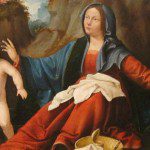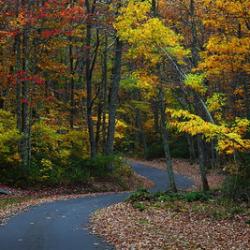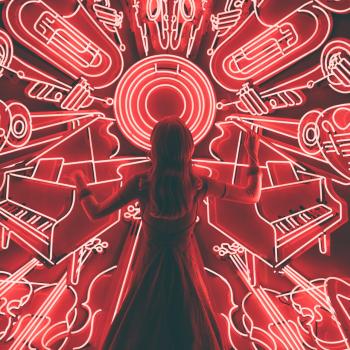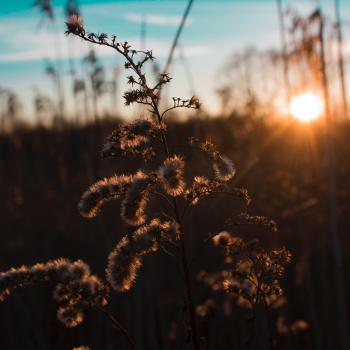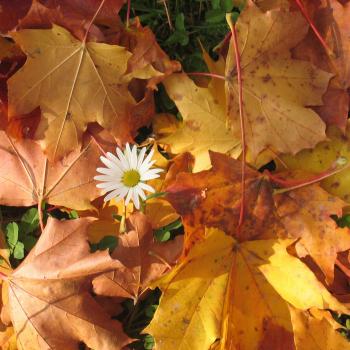
My Unitarian Universalist fellowship, like most UU congregations, is a recognized Welcoming Congregation. According to the UU Association website, “In the 1980s and 90s, when the word ‘welcoming’ became a code word for lesbian, gay, and bisexual people, the Unitarian Universalist Association launched a Welcoming Congregation Program to help us learn how to undo homophobia—and later, transphobia (prejudice against transgender people)—in our hearts and minds, our congregations, and our communities.”
As a former chairman of my fellowship’s Social Justice Committee, I am deeply committed to promoting inclusivity and acceptance for all people, regardless of who they are or who they love. Our congregation strives to provide safe and equitable opportunities inside our walls, and works hard to promote the rights of LGBTQ individuals in our county and state. And as a bisexual woman and leader in our Women’s Ritual Circle, it is important to me that we continue to have an inclusive atmosphere in our pagan activities and ceremonies.
So what does a welcoming women’s pagan group look like? With transgender rights so much in the news lately, as well as the creation of new national monuments to recognize pivotal events in the history of the LGBTQ rights movement, I have been thinking about this a lot recently.
Our UU circle generally limits our rituals to women, although occasionally we do open our ceremonies to anyone old enough to participate. I sometimes struggle with defining our group by sex, but in a society dominated mostly by male personalities and priorities, our meetings become a safe and nurturing space where ladies feel free to be themselves and to express their opinions openly. As a woman who works in a male-dominated industry, I find our rituals to be a healing retreat from the atmosphere of the business meetings I attend every day where I frequently feel the need to alter my natural attitude and interpersonal skills in an attempt to garner professional acceptance and respect. That said, I also enjoy the tenor of our open ceremonies because men have just as much love, playfulness, and fellowship to offer any ritual as women do.
As far as I know, none of our current members is transgender, but I sincerely believe that as a group we would welcome anyone who identifies herself as a woman with open arms. The first UU principle is “The inherent worth and dignity of every person,” and I have seen this affirmed time and time again both within our circle and within our fellowship at large. Each member of our group is unique, therefore each of us brings to our community different opinions, backgrounds, and experiences, further enriching each other in our life journeys. A transgender woman would only deepen our collective wisdom.
Gender Definitions
UU pagans should also consider the definition of “female” within our rituals, songs, and readings. I sometimes find myself telling others that I’m not a “girly girl.” I don’t care much for stereotypical activities such as shopping and collecting designer handbags, not that there is anything wrong with these interests. I rarely wear makeup. I feel so out of place in women’s beauty salons that I prefer to cut my own hair (which is fortunately relatively easy to do since it’s curly). And several years ago, before I gained weight and curves, I only wore skirts, dresses, and jewelry on very special occasions. I have a feeling that many, if not most, of the other ladies in our circle don’t identify with all of society’s standards for women.
Yet so much pagan lore and ritual is centered around female/male dichotomy. An Internet search for pagan resource materials quickly turns up many references to Mother Earth, Father Sun or Father Sky, and stories about the heterosexual relationships of Gods and Godesses. Readings, chants, and songs frequently contain stereotypical metaphors and analogies concerning that which is considered female and that which is considered male. The two are often seen as separate and opposite, sometimes even in conflict. And many times the physical and/or psychological union of males and females is presented as a requirement for both personal and community harmony and wholeness.
No matter where one falls on the sexuality spectrums, everyone understands that it takes both a male and a female to create almost all forms of life. Hence the prominence of these themes in paganism, as well as in all other religions. But as UU pagans, we can strive to make certain that we don’t promote the idea that people need to align themselves with any stereotypical archetypes. I believe everyone can benefit from recognizing positive and negative traits within themselves, regardless of which gender they are sometimes associated with. There is a fine line between saying “Here is a story that teaches us about life and morality,” and “Here is who you should be and who you shouldn’t be.” If anyone can successfully navigate, share, and learn from such lessons in inclusive and welcoming ways, I believe it is UU pagans.
Redefining Motherhood
There is another facet of pagan symbolism that I feel deserves our consideration and careful application if we want to make all of our members feel welcome and accepted, particularly in a women’s group – the imagery of motherhood and the importance that is placed on that institution. Once again, everyone understands that we all physically came from our mothers. And as a mother myself, I have a deep love and respect for what it means to raise another human being. But our concept of motherhood can be expanded to include caring for others, including our animal and plant companions. It can mean being supportive of younger people in our congregations, families, and communities. It can mean being a mentor or an educator. Everyone can be a mother in these ways, regardless of her ability or desire to give birth to a child.
And while I believe paganism places equal importance on the value of youth, middle, and old age, this is another area we should examine in our rituals. Personally, I don’t like the term “crone.” In popular culture it carries a negative connotation and there is no equivalent concept for an older man. I prefer the word “sage” and substitute it into my chants and readings when necessary. Our society puts a lot of value on youthful women while downplaying or denying the desirability of older women, so it’s important that our UU pagan groups carefully preserve the respect our rituals and stories give to the more experienced members of our groups, while also appreciating and encouraging the voices of the younger members.
Building Acceptance and Welcoming
How can we build acceptance and a welcoming environment into our ceremonies? We can search for tales and myths which feature strong women who don’t necessarily fit into stereotypical roles. There are plenty of them. We can even create new ones as needed. We can also reduce or eliminate the use of narratives that equate being heterosexual, or a certain ideal of a man or woman, or a mother, or young with achieving perfection and happiness. Such tales and analogies have existed since people began to share them around the fireside, and they are an important part of our history as humans. But we as a species have evolved and grown beyond those times and those constraints (which were always at odds with reality), and as UUs we need to provide respect to everyone in our pagan circles.
No one’s way of being should be represented in UU pagan rituals as having less validity or less worthiness of acceptance than anyone else’s. I believe that when we celebrate the diversity of our members and visitors, when we offer welcoming paganism, it is to the great benefit of everyone involved.


